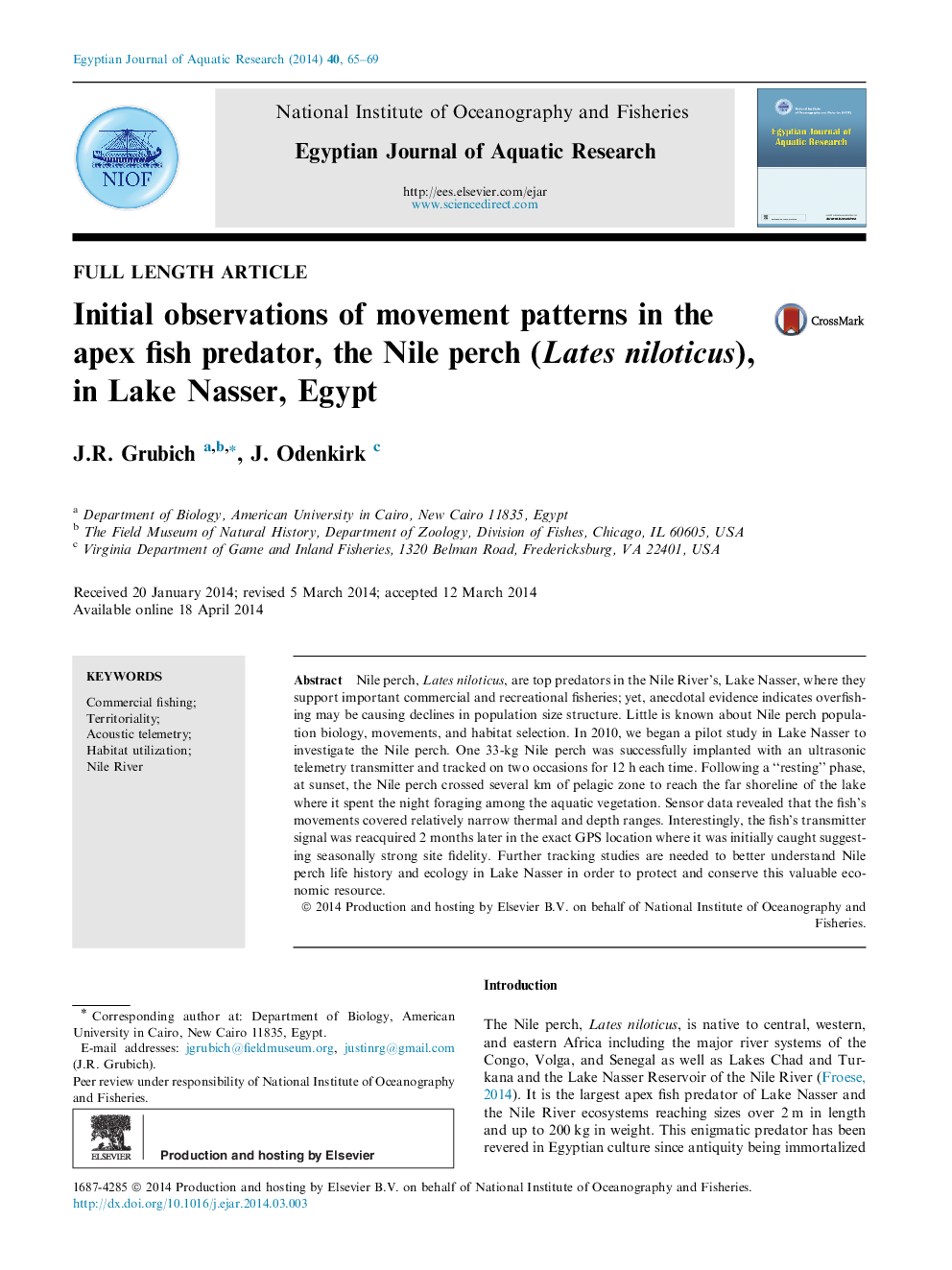| Article ID | Journal | Published Year | Pages | File Type |
|---|---|---|---|---|
| 4493208 | The Egyptian Journal of Aquatic Research | 2014 | 5 Pages |
Nile perch, Lates niloticus, are top predators in the Nile River’s, Lake Nasser, where they support important commercial and recreational fisheries; yet, anecdotal evidence indicates overfishing may be causing declines in population size structure. Little is known about Nile perch population biology, movements, and habitat selection. In 2010, we began a pilot study in Lake Nasser to investigate the Nile perch. One 33-kg Nile perch was successfully implanted with an ultrasonic telemetry transmitter and tracked on two occasions for 12 h each time. Following a “resting” phase, at sunset, the Nile perch crossed several km of pelagic zone to reach the far shoreline of the lake where it spent the night foraging among the aquatic vegetation. Sensor data revealed that the fish’s movements covered relatively narrow thermal and depth ranges. Interestingly, the fish’s transmitter signal was reacquired 2 months later in the exact GPS location where it was initially caught suggesting seasonally strong site fidelity. Further tracking studies are needed to better understand Nile perch life history and ecology in Lake Nasser in order to protect and conserve this valuable economic resource.
